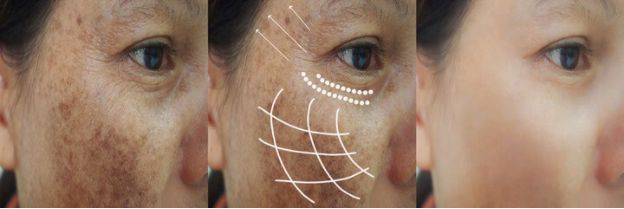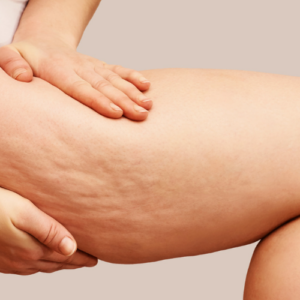
Getting older comes with unavoidable facial changes. Among other things, you’ll likely spot wrinkles around your mouth and neck, along with deflated or sagging cheeks. Loose skin around your jawline is another telltale sign of ageing. But pictures of before and after a facelift show that all of that can go away. You see, a facelift procedure can restore your refreshing, youthful looks.
In this article, we’ll cover everything you need to know about facelifts. We will explore the procedure, cost, preparation steps, the recovery process for a facelift, and treatment results.
What is a Facelift?
A facelift is a beauty procedure that improves the visible signs of ageing in your neck and facial region. Therefore, it involves:
- Removing loose, excess or sagging skin
- Smoothing folds
- Tightening facial tissues.
Who is Eligible For a Facelift?
Facial changes after a facelift are easy to spot. However, the procedure isn’t a magical solution to any face-related condition. For example, a facelift can’t address superficial wrinkles, nose creases or sunburns. Also, it isn’t for everyone.
Eligible patients for facelifts are:
- Healthy patients with no medical condition that can affect their recovery or healing
- Patients that don’t smoke or abuse substances
- People that have realistic expectations
- Patients that don’t use blood-thinning supplements and medications
- People that don’t have a history of inconsistent weight gain and loss

Types of Facelift Treatments
There are several types of facelifts. Generally, facelifts can be classified as surgical or non-surgical. The popular ones are:
Incision treatments
These are procedures that require superficial surgical cuts on a patient’s neck or face to rejuvenate the skin. The types of cuts that a surgeon can make include:
- A standard incision: The surgical cut starts from your hairlines, near your temples. It moves down the front of your ear, circles the earlobe and heads back to your scalp. This incision is used to address significantly loose, excess or sagging skin in the lower face and neck.
- A limited incision: This is a short surgical cut that begins below your hairline but above your ears. It hugs the skin in front of your ears but doesn’t head back into your lower scalp. Short incisions address early ageing signs on the face.
- A neck lift incision: This incision starts from your earlobe and advances into your lower scalp. It also involves a slight incision below your chin.
After a surgeon makes the incisions, fat, excess skin and underlying muscle will be redistributed, removed, tightened or lifted. Dissolvable sutures are usually used for the surgical procedure.
Platelet-rich Plasma (PRP) Treatment
A PRP facelift is a non-surgical treatment that stimulates the production of collagen. It is a non-invasive procedure that uses the patient’s blood to provide effective rejuvenating results. Blood contains red cells, white cells and platelets. But only platelets are used in PRP treatments because they are composed of plasma and growth agents that rejuvenate the skin.
A PRP facelift is popularly known as a vampire facelift because of the stains of blood that are associated with the procedure. It doesn’t involve chemicals or toxins but still fights against wrinkles, plump skin, acne scars, and many other skin conditions.
Getting a vampire facelift takes an hour or two. Here are the steps for a PRP facelift procedure in Toronto:
- A medical aesthetician draws up blood from the patient’s arm.
- Next, the blood platelets are separated from other constituents using a centrifuge.
- Finally, the platelet-rich plasma is injected with a hyaluronic acid filler. This step makes the skin firmer, more elastic and less wrinkled.
Unlike botox treatments, the results of a PRP treatment are long-lasting because the procedure helps your skin heal itself. PRP treatments are some of the most effective non-surgical facelifts available to residents in Toronto.

How to Prepare for a Facelift
Before your facelift in Toronto, here are the details you need to know:
Be prepared to answer questions on your medical history
You’ll be asked questions about your health, especially past surgeries and previous complications. Your surgeon will also enquire about all medications you take and verify whether you’re eligible for a facelift or not. Having credible records to back your claims can make this step easier for you.
Come ready for a facial examination
A facelift is a cosmetic procedure. Therefore, your medical aesthetician will take close-up and angled pictures of your face before and after a facelift. This helps to get a better view of your features during your first few appointments.
Before the procedure, a medical aesthetician will also assess:
- The thickness, elasticity and texture of your skin
- The severity of your folds and wrinkles
- The position of your hairline
- Your overall facial structure
If you have short hair, you may want to grow it out so that it covers your incisions while healing. However, you won’t need to bother about your hair length if you are undergoing a PRP facial treatment.
Wash your hair and face before your appointment
Your medical aesthetician will instruct you when to carry out these personal hygiene steps before and after a facelift. Washing your hair and face helps keep incisions clean. For PRP facelift treatments. it boosts efficacy, assists healing, and reduces infections.
Avoid eating before your appointment
Your medical aesthetician will recommend not eating before coming in for a facelift. Usually, this is because you will be given an anesthetic. When administered, general anesthetics temporarily stop your body’s reflexes. Hence, having food in your stomach can cause vomiting or bring chewed food up to your throat.
Moreover, refined carbohydrates and processed foods can spark facial inflammation. Nevertheless, you’ll be able to take water and medication that your treatment provider approves. However, avoid ibuprofen, aspirin and other blood thinners.
Get someone to drive you home
Incisions and PRP treatments put a strain on your face. This strain can make driving a chore. Therefore, you’ll need someone to take you home and remain by your side. Also, stock your home with ready-made meals and prepare a comfortable resting place ahead of time. Preparing yourself before and after a facelift helps to make the procedure more effective.
What to Expect From Facelifts
Here are the things you should expect before, during, and after a facelift treatment in Toronto:
Before a facelift
Facelifts require an expert to make incisions or inject your face and neck. Therefore, you’ll usually be administered a local (or general) anesthesia before the procedure begins. Anesthetics numb the target areas and prevent you from experiencing pain.
During the procedure
The facelift treatment you’re provided with depends on the result you’re aiming for. For instance, those who have gone through the process say that PRP treatments aren’t painful, thanks to the numbing cream or anesthesia used. For facelifts that involve incisions, there will be more pain.
After a facelift
When the procedure is complete, your medical professional will likely prescribe pain killers. If you get incisions as part of your facelift treatment, they will also provide you with a timeline when you can remove the bandages that cover your incisions. Also, a tube will be placed under your ears to drain excess fluid or blood.
Related article: Busting Top Myths about Facelifts
How to Recover From a Facelift
Facelifts are an effective face rejuvenation treatment method. However, to come out with a young, refreshed look, you’ll need to follow certain instructions.
A few days after your facelift
You’ll likely experience slight discomfort after a facelift. You should expect slight swelling and bruising. Hence, there’s a need to take prescribed pain medications to deal with these side effects.
Generally, you should stay away from strenuous physical activities before and after a facelift procedure. Therefore, avoid hitting the gym, jogging, and running. However, you can walk around. But ensure you get enough rest, especially on the first day after your surgery.
Also, moisturize daily and stay away from the sun. If you have drainage tubes, then you’ll need to go for a follow-up appointment.
A week after your facelift
At this stage, your face should feel lighter. Therefore, it will be safe to stop pain medication during this period. You can also engage in light activities around the house. However, still, avoid strenuous physical activities.
During this period, you can use cool compresses on your face. You should also keep your head elevated while sleeping to prevent facial swelling due to compression. You can get back to driving once you get off your prescribed pain killers.

Two weeks after your facelift
At this stage, you should be comfortable enough to get back to work. You can grow a beard or use makeup to cover any bruise you may have on your skin or neck. Your face should start healing shortly after a facelift. However, you may still experience tingling sensations.
Once you clock two weeks from your PRP facelift, you can return to your regular, healthy routine. However, you’ll still need to stick to the facelift recovery guide provided by your medical aesthetician.
A month after your facelift
You can resume virtually all your activities when you hit the one-month mark. However, you’ll still need to monitor your body and ensure you don’t have serious side effects from the procedure.
One month in, and you can go out without having to cover up incisions or bruises. If you get a PRP facelift in Toronto, you should start seeing results within this timeframe.
Two months after your facelift
By this time, you should have no side effects from your facelift procedure. All bruises and incision marks should also be gone. Finally, you should be able to do everything you used to do before you got a facelift.
How to Manage The Possible Side Effects of Facelifts
You will see tremendous changes before and after a facelift. However, like every other medical procedure, there are risks involved with the procedure. Here are health tips to follow for possible side effects:
Scars and bruises
Bruises and incision scars are common after facelifts. Although your hairline can hide them, some scars may turn red or become raised. If this happens, you should set a follow-up appointment with your doctor. The medical practitioner will inject corticosteroid medications or similar treatments to conceal the scars or bruises.

Hair loss
This is another side effect you may notice when comparing pictures before and after a facelift. However, they are uncommon in PRP treatments because vampire facials help improve hair growth.
Bleeding and hematoma
Slight bleeding is expected after any cosmetic surgery. Therefore, you should only get worried when it doesn’t reduce after the first 48 hours. Healing issues can be a possible cause of operative bleeding. When it occurs, book an appointment with your beauty care provider to have it checked out.
On the other hand, there’s no bleeding after PRP facelift treatments in Toronto. Since there are no incisions, there is no need to worry about blood.
Infections and healing problems
Following PRP facelift treatments, infections are rare. However, they are commonplace with facelift treatments that involve incisions.
Infections can occur when smokers get a facelift, or non-smoking patients expose their incisions. Therefore, ensure you follow your facelift recovery guide and keep your bandages on while you heal.
Skin loss
Skin loss (sloughing) happens when blood flow to facial tissues are interrupted. Skin loss after a face lifting surgery can be addressed with prescribed medications. However, proper wound care should also do the trick.
Nerve injuries
These complications are rare, and half of the time, they are temporary. You should have no troubles with nerve injuries if you get a facelift from a reputable medical spa in Toronto.
Cost of a Facelift in Toronto
The average cost for a PRP facial treatment in Toronto is $1,300 per session. However, depending on where you live, you can get a cheaper or higher fee for the procedure. Also, some patients request additional services like treatments under low-level light or with skin-rejuvenating appliances. These services affect the total price for a PRP treatment session. Unfortunately, your medical insurance can’t cover the cost of a facelift or any other cosmetic procedure in Toronto.
FAQs About Getting a Facelift in Toronto
Below are answers to some frequently asked questions about facelifts:
Q1. How long does a facelift last?
Facelifts don’t last a lifetime. Aside from a patient’s age, other factors like stress levels and genetics affect how long the treatment lasts. Ensure you take pictures before and after a facelift to assess your facial changes.
Q2. What is the best age to get a facelift?
Several independent studies show that 40 is a decent age to start considering a facelift. However, you should confirm that you have ageing signs, and you’re eligible for one before you get the procedure. People in their 20s and 30s shouldn’t have many ageing signs to worry about. And if they do, dermal fillers can be effective.
Q3. How do I make facelift results last longer?
Follow these steps before and after a facelift to get longer-lasting results:
- Protect your face from sun damage: Rays from the sun make the skin age prematurely. Therefore, the best thing to do is to avoid direct exposure to these rays. Use sunscreen whenever you step out.
- Lead a healthy life: This involves eating right, staying hydrated, maintaining healthy habits and exercising regularly.
- Opt for medical-grade skincare: Consider getting a personalized regimen that can help in rejuvenating your skin.
- Consider skin resurfacing techniques: These techniques correct wrinkles and lines on your skin.
Q4. Is a facelift treatment safe?
Yes. Surgical and non-surgical facelift treatments are safe when licensed medical aestheticians perform them.
In conclusion
Getting a facelift is an effective way to keep your youthful looks. Also, there are alternatives to a surgical facelift. These alternatives are non-invasive and offer faster recovery time. The best part is they also offer youthful, tighter facial skin.
Canada MedLaser is home to licensed medical aestheticians with years of experience. We offer non-surgical facelift treatments like Viva Facelift, PRP Facelift and Aquapure Facials. Book a consultation session with our medical spa in Toronto today, and we’ll draft out a custom facelift treatment plan for you.
Book Free Consultation
"*" indicates required fields
-
Facebook
-
Twitter
-
Linkedin






